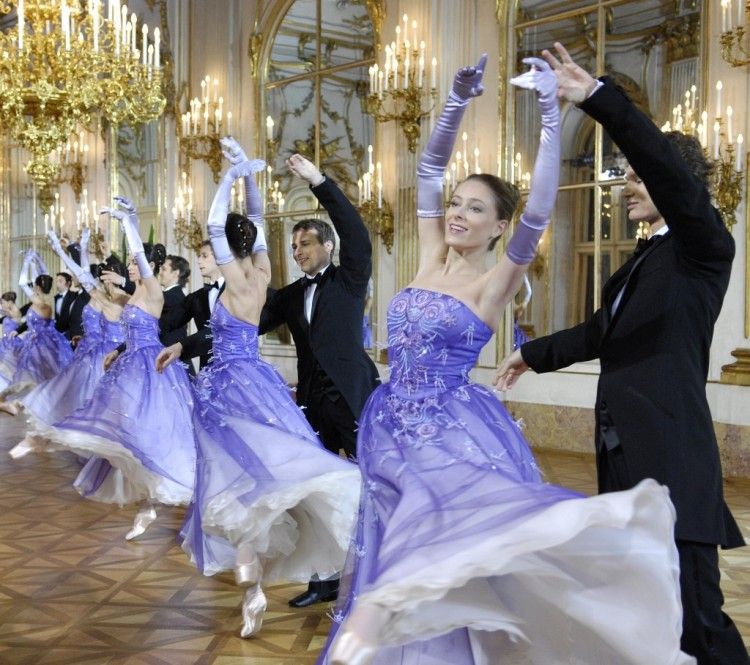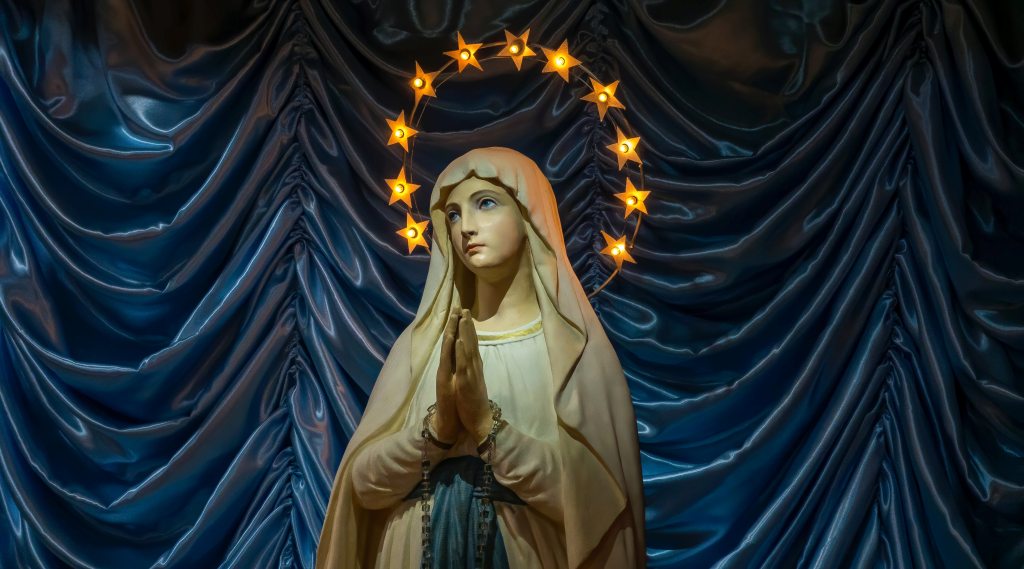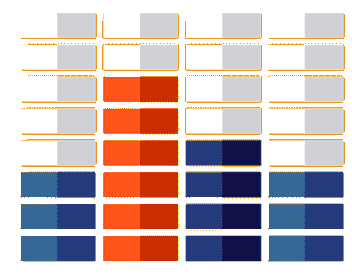
Deutsch-Chinesische Enzyklopädie, 德汉百科


作于1866年。当时,小约翰·施特劳斯任维也纳宫廷舞会指挥。维也纳男声合唱协会的指挥赫尔贝克约请小约翰·施特劳斯为他的合唱队写一首合唱曲。这时的小约翰·施特劳斯虽已创作出数百首圆舞曲,但还没有创作过声乐作品。这首合唱曲的歌词是他请诗人哥涅尔特创作的。 1867年,这部作品在维也纳首演。因为当时的维也纳在普鲁士的围攻之下,人们正处于悲观、失望之中,因此作品也遭到不幸,首演失败。直到1868年二月,小约翰·施特劳斯住在维也纳郊区离多瑙河不远的布勒泰街五十四号时,把这部合唱曲改为管弦乐曲,在其中又增添了许多新的内容,并命名为《蓝色多瑙河》圆舞曲。 这部乐曲同年在巴黎公演时获得了极大的成功。仅仅几个月之后,这部作品就得以在美国公演。顷刻间,这首圆舞曲传遍了世界各大城市,后来竟成为作者最重要的代表作品。直至今日,这首乐曲仍然深受世界人民喜爱。在每年元旦维也纳举行的"新年音乐会"上,本曲甚至成了保留曲目。 乐曲由序奏、五个圆舞曲和尾声组成: 序奏开始时,小提琴在A大调上奏出徐缓的震音,好象是多瑙河的水波在轻柔地翻动。 在这个背景上,圆号吹奏出这首乐曲最重要的一个动机,它象征着黎明的到来。 第一圆舞曲描写了在多瑙河畔,陶醉在大自然中的人们翩翩起舞时的情景。 第二圆舞曲首先在D大调上出现, 巧妙而富于变化的第二圆舞曲描写了南阿尔卑斯山下的小姑娘们,穿着鹅绒舞裙在欢快地跳舞;突然乐曲转为降B大调,富于变化的色彩显得格外动人。 第三圆舞曲属歌唱性旋律,这段音乐采用了切分节奏,给人以亲切新颖的感觉。 第四圆舞曲在开始时节奏比较自由,琶音上行的旋律美妙得连作曲家本人也很得意,仿佛春意盎然,沁人心脾。 第五圆舞曲是第四圆舞曲音乐情绪的继续和发展,只是转到A大调上。 起伏、波浪式的旋律使人联想到在多瑙河上无忧无虑地荡舟时的情景。 接下去的部分,是全曲的高潮和结尾。乐曲的结尾有两种,一种是合唱型结尾,接在第五圆舞曲之后,很短。另一种是管弦乐曲结尾,较长,依次再现了第三圆舞曲、第四圆舞曲及第一圆舞曲的主题,最后结束在疾风骤雨式的狂欢气氛之中。
Der Walzer An der schönen blauen Donau (häufig kurz: Donauwalzer) wurde von Johann Strauss (Sohn) im Spätherbst 1866 und Winter 1866/67 komponiert und am 15. Februar 1867 mit einer eigenen Fassung mit dem Wiener Männergesang-Verein uraufgeführt. Die erste Aufführung der Konzertfassung des als opus 314 veröffentlichten Walzers fand am 10. März 1867 im k.k. Volksgarten statt. Er basiert kompositorisch auf Melodien, die Strauss bereits in früheren Werken verwendete. Der Walzer wurde bald zu einer heimlichen Hymne Österreichs und wird regelmäßig zum Jahreswechsel gespielt.
Der Donauwalzer gilt als inoffizielle Landeshymne des Bundeslandes Wien.
『美しく青きドナウ』(うつくしくあおきドナウ、ドイツ語: An der schönen, blauen Donau)作品314は、ヨハン・シュトラウス2世が1867年に作曲した合唱用のウィンナ・ワルツ。
『ウィーンの森の物語』と『皇帝円舞曲』とともにシュトラウス2世の「三大ワルツ」に数えられ[1]、その中でも最も人気が高い[2]。作曲者およびウィンナ・ワルツの代名詞ともいわれる作品である。オーストリアにおいては、正式なものではないが帝政時代から現在に至るまで「第二の国歌」と呼ばれている[3]。
"The Blue Danube" is the common English title of "An der schönen, blauen Donau", Op. 314 (German for "On the Beautiful Blue Danube"), a waltz by the Austrian composer Johann Strauss II, composed in 1866. Originally performed on 15 February 1867[1][2] at a concert of the Wiener Männergesangsverein (Vienna Men's Choral Association),[2] it has been one of the most consistently popular pieces of music in the classical repertoire. Its initial performance was considered only a mild success,[1] however, and Strauss is reputed to have said, "The devil take the waltz, my only regret is for the coda—I wish that had been a success!"[2]
After the original music was written, the words were added by the Choral Association's poet, Joseph Weyl.[1][3] Strauss later added more music, and Weyl needed to change some of the words.[4] Strauss adapted it into a purely orchestral version for the 1867 Paris World's Fair, and it became a great success in this form.[1] The instrumental version is by far the most commonly performed today. An alternate text was written by Franz von Gernerth, "Donau so blau" (Danube so blue). "The Blue Danube" premiered in the United States in its instrumental version on 1 July 1867 in New York, and in the UK in its choral version on 21 September 1867 in London at the promenade concerts at Covent Garden.[citation needed]
When Strauss's stepdaughter, Alice von Meyszner-Strauss, asked the composer Johannes Brahms to sign her autograph-fan, he wrote down the first bars of "The Blue Danube", but adding "Leider nicht von Johannes Brahms" ("Unfortunately not by Johannes Brahms").[2][5]
Le Beau Danube bleu (An der schönen blauen Donau, en allemand) op. 314, est une célèbre valse viennoise pour orchestre symphonique, composée par le compositeur autrichien Johann Strauss II (fils) en 18661. Poème symphonique dédié au Danube2, elle fait partie de ses œuvres les plus célèbres, avec entre autres Wiener Blut (Esprit viennois) de 1873, régulièrement jouées entre autres par l'Orchestre philharmonique de Vienne en clôture et un des rappels traditionnels du concert du nouvel an à Vienne3. Considérée comme un second hymne national de Vienne et de l'Autriche, elle est également une des musiques de film les plus célèbres de l'histoire du cinéma avec sa reprise de 2001, l'Odyssée de l'espace de Stanley Kubrick en 19684.
Sul bel Danubio blu (An der schönen blauen Donau) op. 314, è un valzer di Johann Strauss (figlio), riconosciuto a livello mondiale come il valzer più celebre scritto dal compositore e come uno fra i più famosi brani di musica classica di tutti i tempi.
Johann von Herbeck, director del Wiener Männergesangverein, pidió a Strauss que le escribiera un vals para su coro. Herbeck llevaba mucho tiempo disgustado con el repertorio del coro masculino, que en su opinión era mediocre y gris, por lo que deseaba un vals coral "vivo y alegre" para los carnavales de aquel año. La letra la escribiría el poeta fijo de la sociedad coral.
Strauss se puso al trabajo, y pronto terminó el encargo, que sería el más famoso y popular de sus cuatrocientos valses.
En aquella época, reinaba en Viena una atmósfera derrotista como consecuencia de la derrota de Austria a manos de Prusia en la Guerra de las Siete Semanas en 1866.
«На прекрасном голубом Дунае» (нем. An der schönen blauen Donau) — одно из самых известных классических музыкальных произведений, вальс Иоганна Штрауса (сына) (op. 314), написанный в 1866 году. Он является в некотором роде неофициальным гимном Австрии и традиционно исполняется на бис в Новогоднем венском концерте.
Первоначально вальс был написан для Венского хорового общества (нем. Wiener Männergesangverein ). Слова на музыку написал поэт хорового общества Йозеф Вайль (Joseph Weyl)[1][2]. Премьера состоялась 13 февраля 1867 года во дворце Думбы и встретила прохладный приём у венской публики. После концерта Штраус сказал: «Чёрт с ним, с вальсом, а вот коду мне жаль — я бы хотел её успеха» («Den Walzer mag der Teufel holen, nur um die Coda tut’s mir leid — der hätt' ich einen Erfolg gewünscht»).
Второй раз Штраус представил чисто инструментальную версию вальса в этом же 1867 году на Всемирной выставке в Париже, и это выступление имело огромный успех. Вальс был издан миллионным тиражом[3]. Иоганесс Брамс ознакомившись с нотами вальса надписал под темой вальса для Адели Штраус: «К сожалению, не моё»[4].
Фортепианная обработка вальса, выполненная А. Шульцем-Эвлером, пользовалась популярностью как виртуозное сочинение и записана такими пианистами, как Иосиф Левин, Эрл Уайлд, Хорхе Болет, Марк Андре Амлен.

Das Hauptthema «An die Freude» (ein Gedicht von Friedrich Schiller) aus dem letzten Satz der neunten Sinfonie Ludwig van Beethovens wurde 1972 vom Europarat zur Europahymne bestimmt. Um keine Sprache zu bevorzugen, wurde eine Instrumentalfassung gewählt. 1985 wurde die Melodie zur Hymne der Europäischen Gemeinschaft (heute EU), denn sie versinnbildliche «die Werte, die alle teilen, sowie die Einheit in der Vielfalt».



 Music
Music

 Music
Music
 *Appreciation of famous classical music
*Appreciation of famous classical music

 Music
Music
 *Appreciation of famous music
*Appreciation of famous music

 Religion
Religion



 Christmas Market
Christmas Market

Bach
Gounod
Schubert

| Konzert | Tonart | BWV | Besetzung |
|---|---|---|---|
| 1. Konzert | F-Dur | BWV 1046 | 2 Hörner, 3 Oboen, Fagott, Violino piccolo, Streicher, Continuo |
| 2. Konzert | F-Dur | BWV 1047 | Trompete, Violine, Blockflöte, Oboe, Streicher, Continuo |
| 3. Konzert | G-Dur | BWV 1048 | 3 Violinen, 3 Violen, 3 Celli, Continuo |
| 4. Konzert | G-Dur | BWV 1049 | Violine, 2 Blockflöten, Streicher, Continuo |
| 5. Konzert | D-Dur | BWV 1050 | Cembalo, Violine, Traversflöte, Streicher, Continuo |
| 6. Konzert | B-Dur | BWV 1051 | 2 Violen, Violoncello, 2 Gamben, Violone, Continuo |

俞丽拿演奏
吕思清演奏(北京交响乐团,谭利华指挥)
西崎崇子演奏
盛中国演奏
Gil Shaham演奏 新加坡交响乐团 Singapore Symphony Orchestra



Massimiliano Martinelli J.S. Bach - Cello Suite No. 1 in G Major, BWV 1007 I. Prélude 00:00 II. Allemande 03:00 III. Courante 07:15 IV. Sarabande 09:50 V. Menuett I - Menuett II 12:50 VI. Gigue 15:53 Mr & Mrs Cello Barrière - 6 Cello Sonatas: No. 4 in G Major I. Andante 17:37 II. Adagio 22:22 III. Allegro prestissimo 25:34 Sarah Joy Beethoven - Bagatelle No. 25 in A Minor "Für Elise" 29:31 Massimiliano Martinelli J.S. Bach - Cello Suite No. 2 in D Minor, BWV 1008: I. Prélude 34:18 II. Allemande 38:22 III. Courante 41:23 IV. Sarabande 43:15 V. Menuett I - Menuett II 47:57 VI. Gigue 51:08 Mr & Mrs Cello Paganini - Variations on "Dal tuo stellato soglio" from Rossini's "Mosè in Egitto" 53:48 Einaudi - Nuvole Bianche 1:00:59 Einaudi - Passaggio 1:07:37 Einaudi - Reverie 1:12:03 Einaudi - Tu Sei 1:17:04
 Performing Arts
Performing Arts
 Music charts
Music charts
